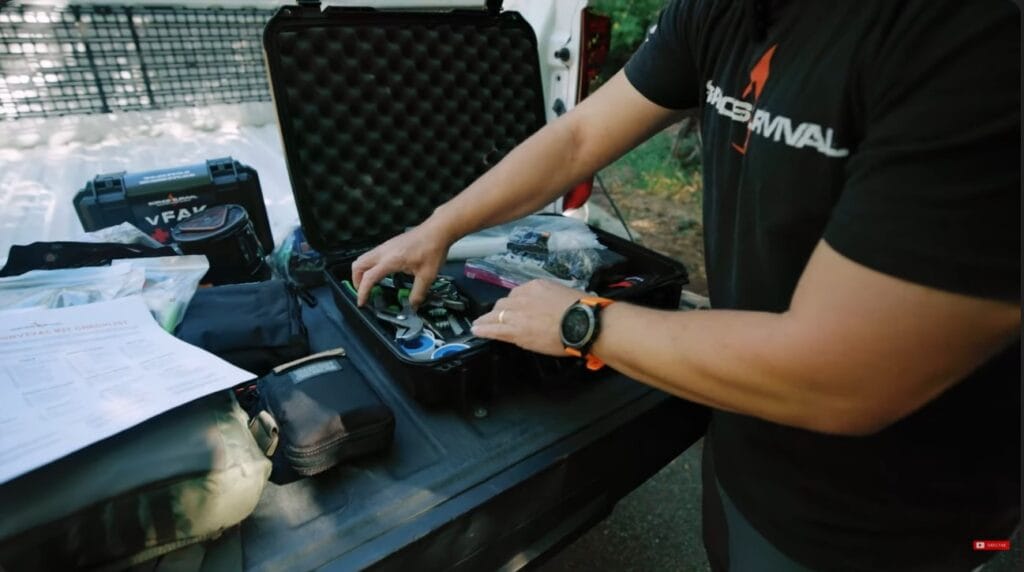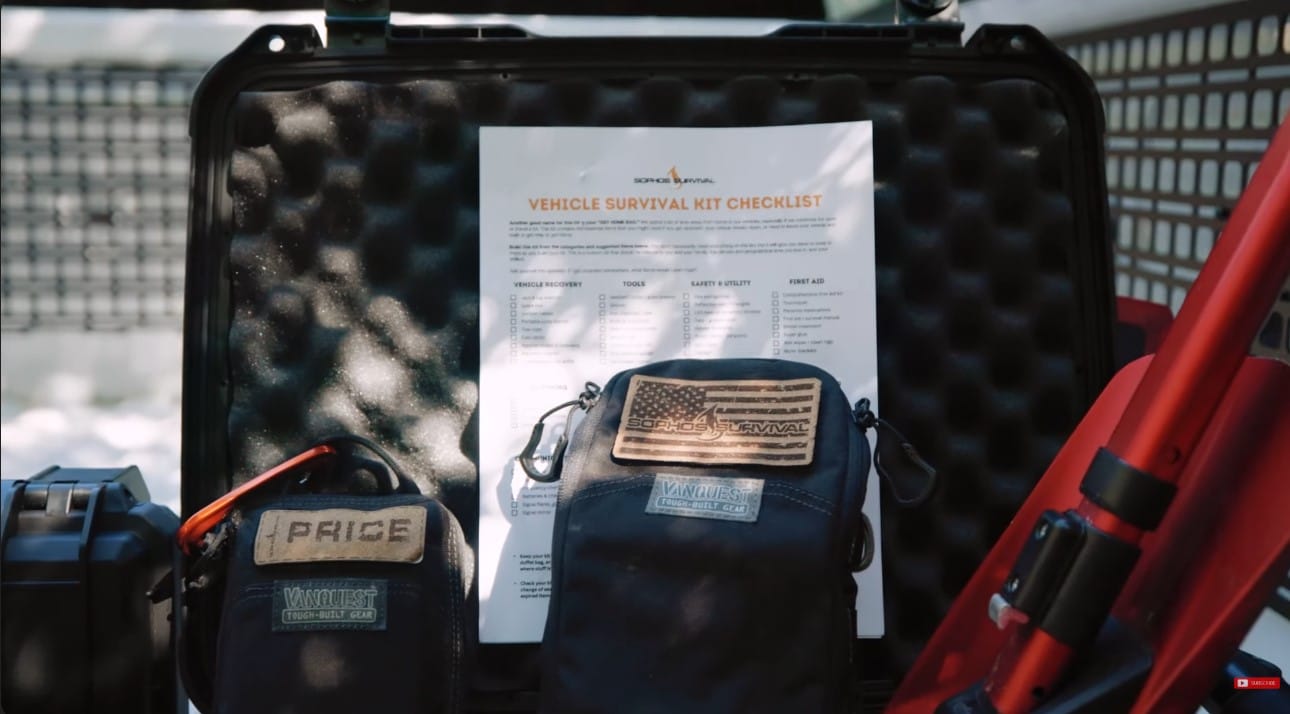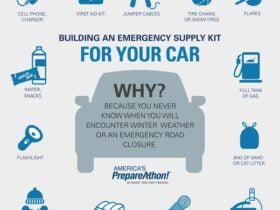To make an emergency car kit, gather essential items like a first aid kit, flashlight, and jumper cables. Store them in a durable, easy-to-access container.
Emergencies on the road can happen at any time. Being prepared with a well-stocked car kit can make a significant difference. A basic emergency kit should include items to address medical needs, vehicle breakdowns, and personal safety. Having these essentials within reach can reduce stress and improve safety during unexpected situations.
Whether you’re on a long road trip or a short drive, a well-prepared emergency car kit ensures you’re ready for any scenario. Preparing this kit is a straightforward task that offers peace of mind and readiness for unforeseen events.
Basic Essentials
Having a well-prepared emergency car kit can be a lifesaver. In this section, we’ll cover the Basic Essentials you need. These items ensure you’re ready for any unexpected situation.
First Aid Supplies
A good first aid kit is crucial. It helps treat minor injuries and can be a vital resource.
- Adhesive Bandages – For small cuts and scrapes.
- Antiseptic Wipes – To clean wounds and prevent infection.
- Gauze Pads – Useful for larger wounds.
- Medical Tape – To secure bandages in place.
- Pain Relievers – Alleviate pain from injuries.
- Scissors – To cut gauze, tape, or clothing.
- Tweezers – For removing splinters or debris.
Basic Tools
Having essential tools can assist in minor repairs. These tools are a must-have in your car kit.
- Jumper Cables – In case of a dead battery.
- Flashlight – To see in the dark. Include extra batteries.
- Screwdrivers – Both flathead and Phillips types.
- Pliers – Useful for many tasks.
- Tire Pressure Gauge – Ensure your tires are properly inflated.
- Multi-tool – Combines several tools into one.
- Duct Tape – For temporary fixes.
These Basic Essentials ensure you’re prepared for common car issues. They can make a significant difference in an emergency.

Safety Items
Being prepared for emergencies on the road is crucial. A well-equipped emergency car kit can make all the difference. The safety items in your kit are vital for ensuring your protection. These items help you stay visible and alert other drivers in case of a breakdown or accident.
Warning Triangles
Warning triangles are essential in an emergency. They alert other drivers to your presence. Place them at a safe distance from your car. This gives other drivers time to react. It also helps prevent further accidents.
The placement of warning triangles is important. Follow these steps:
- Place the first triangle 10 feet behind your car.
- Place the second triangle 100 feet behind your car.
- Place the third triangle 200 feet behind your car.
This setup ensures maximum visibility. Use them in all weather conditions.
Reflective Vests
Reflective vests are another crucial item. They make you visible to other drivers. Wear them whenever you exit your vehicle. This is especially important at night or in low visibility.
Reflective vests come in different sizes. Ensure everyone in your car has one. Store them in an easily accessible location.
Here are some key features of reflective vests:
- High visibility colors
- Reflective strips
- Adjustable sizes
These features increase your visibility and safety. Always wear your vest before stepping out of your car.
Survival Gear
Being prepared for an emergency while driving is crucial. Including the right survival gear in your car kit can make all the difference. This section will guide you on essential items such as water, food, and warm clothing.
Water And Food
In an emergency, staying hydrated and nourished is vital. Ensure you pack:
- Water bottles: Keep at least three liters per person.
- Non-perishable food: Choose items like energy bars, nuts, and dried fruits.
- Manual can opener: If you store canned food, this is a must.
Consider including a water purification method such as tablets or a small filter. This ensures you can drink clean water if you run out.
Warm Clothing
Staying warm can be a matter of life and death in cold conditions. Your emergency kit should include:
- Blankets: Wool or thermal blankets are best.
- Extra layers: Pack spare sweaters, socks, and gloves.
- Emergency ponchos: These can keep you dry and warm.
Include hand warmers and a hat to help retain body heat. Proper clothing can protect you from hypothermia.
Having these items in your car can keep you safe during an emergency. Always check and update your kit regularly.

Tech Tools
Having the right tech tools in your emergency car kit can make a huge difference during an unforeseen situation. These gadgets can help you stay connected, safe, and prepared for any emergency. Below, we focus on two essential tech tools: a portable phone charger and a flashlight.
Portable Phone Charger
A portable phone charger is crucial in emergencies. Your phone may run out of battery when you need it most. Keeping a fully charged portable charger in your car ensures you can make calls, use maps, and access emergency services.
- Always keep the charger fully charged.
- Choose a charger with multiple USB ports.
- Opt for a high-capacity charger for longer usage.
Below is a simple table to help you choose a charger:
| Feature | Recommendation |
|---|---|
| Capacity | 10,000 mAh or more |
| Ports | At least 2 USB ports |
| Size | Compact and portable |
Flashlight
A flashlight is essential for nighttime emergencies or low-light conditions. It helps you see clearly and signals for help. Keep a flashlight in your car at all times.
- Choose a flashlight with a long battery life.
- LED flashlights are brighter and last longer.
- Water-resistant flashlights are ideal for all conditions.
Look for additional features like a magnetic base or SOS mode. These can be helpful in various situations.
Navigation Aids
Getting lost during an emergency can be scary. Having reliable navigation aids in your car kit is crucial. This section covers essential tools to keep you on the right path.
Maps And Gps
Technology can fail, so always have a physical map in your emergency car kit. Get a detailed map of your local area and a general map of your state. These maps can help you find alternative routes during an emergency.
A GPS device is also important. It can provide real-time directions and traffic updates. Make sure your GPS device is fully charged and up-to-date. Keep a car charger handy to ensure it stays powered.
| Item | Importance |
|---|---|
| Physical Maps | High |
| GPS Device | High |
Compass
A compass is a simple, yet effective tool. It helps you navigate even without electronic devices. Place a small, durable compass in your kit. Make sure it is easy to read and reliable.
Using a compass along with a map can guide you through unfamiliar areas. Learn basic compass skills to maximize its usefulness. Knowing which direction you are heading can be a lifesaver.
- Buy a sturdy compass.
- Learn basic compass skills.
- Use it with your physical maps.

Vehicle Maintenance
Proper vehicle maintenance is crucial for your safety on the road. Keeping your car in top shape can prevent many emergencies. Below, we’ll discuss two key items to include in your emergency car kit for vehicle maintenance.
Spare Tire And Jack
A spare tire is essential for any car emergency kit. Flat tires can happen anytime. Having a spare tire can save you hours of waiting for help. Ensure the spare tire is in good condition. Check it regularly for air pressure.
Along with the spare tire, include a jack in your kit. The jack helps you lift the car to change the tire. Make sure you know how to use the jack. Practice changing a tire in a safe place.
| Item | Importance |
|---|---|
| Spare Tire | High |
| Jack | High |
Jumper Cables
Jumper cables can save you from a dead battery. They are easy to use and effective. Always keep a set of jumper cables in your car. Make sure the cables are long and thick enough.
Knowing how to use jumper cables is important. Follow these steps to jump-start your car:
- Park the cars close but not touching.
- Turn off both cars.
- Attach the red cable to the dead battery’s positive terminal.
- Attach the other red cable end to the good battery’s positive terminal.
- Attach the black cable to the good battery’s negative terminal.
- Attach the other black cable end to an unpainted metal surface on the dead car.
- Start the working car and then the dead car.
Always follow safety instructions when using jumper cables. Practice these steps to be prepared.
Additional Tips
Having an emergency car kit is essential for unexpected situations. Beyond the basics, there are additional tips to enhance your kit’s effectiveness. These tips ensure you are always prepared.
Regular Kit Checks
Regularly checking your emergency car kit is crucial. Items can expire or get damaged over time. Inspect your kit every six months. Look for any missing or worn-out items. Replace expired items immediately.
Here’s a simple checklist for your regular inspections:
- First aid supplies
- Flashlight batteries
- Non-perishable food
- Water bottles
- Blanket condition
Seasonal Adjustments
Adjust your emergency car kit according to the seasons. Each season brings unique challenges. In winter, add items to keep warm. In summer, focus on staying cool and hydrated.
Consider these seasonal additions:
| Winter | Summer |
|---|---|
| Extra blankets | Sunscreen |
| Hand warmers | Extra water |
| Ice scraper | Hat and sunglasses |
Keep your kit updated to ensure it meets your needs year-round. Remember, a well-prepared kit can make a significant difference in emergencies.

Frequently Asked Questions
What Should Be In An Emergency Car Kit?
An emergency car kit should include first aid supplies, tools, a flashlight, food, water, and a blanket.
Why Is An Emergency Car Kit Important?
It ensures safety during unexpected situations like breakdowns or accidents, providing essential supplies until help arrives.
How Often Should I Check My Car Kit?
Check your emergency car kit every six months to replace expired items and ensure everything is in working order.
Can I Buy A Pre-made Car Kit?
Yes, pre-made car kits are available for purchase, but you can customize them to better suit your needs.
Where Should I Store My Car Kit?
Store your emergency car kit in an easily accessible location, such as the trunk or under a seat.
What Food Is Best For An Emergency Car Kit?
Non-perishable items like energy bars, nuts, and canned goods are ideal for an emergency car kit.
Conclusion
Creating an emergency car kit is essential for safety. It ensures you’re prepared for unexpected situations. Assemble necessary items like first aid supplies, tools, and non-perishable food. Regularly check and update your kit. Stay safe on the road by being well-prepared.
An emergency car kit can make a critical difference.












Leave a Reply